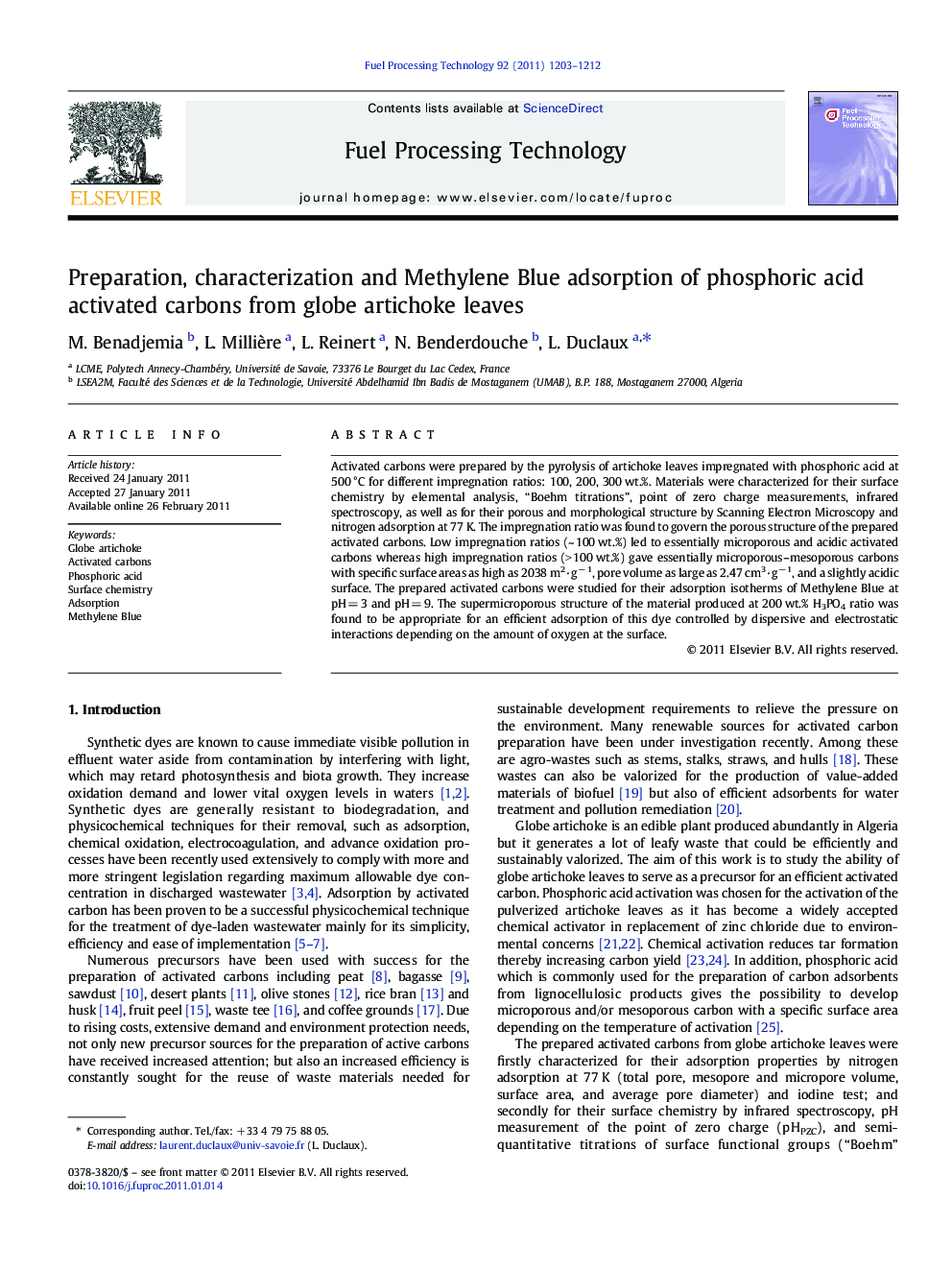| Article ID | Journal | Published Year | Pages | File Type |
|---|---|---|---|---|
| 210873 | Fuel Processing Technology | 2011 | 10 Pages |
Activated carbons were prepared by the pyrolysis of artichoke leaves impregnated with phosphoric acid at 500 °C for different impregnation ratios: 100, 200, 300 wt.%. Materials were characterized for their surface chemistry by elemental analysis, “Boehm titrations”, point of zero charge measurements, infrared spectroscopy, as well as for their porous and morphological structure by Scanning Electron Microscopy and nitrogen adsorption at 77 K. The impregnation ratio was found to govern the porous structure of the prepared activated carbons. Low impregnation ratios (~ 100 wt.%) led to essentially microporous and acidic activated carbons whereas high impregnation ratios (> 100 wt.%) gave essentially microporous–mesoporous carbons with specific surface areas as high as 2038 m2·g− 1, pore volume as large as 2.47 cm3·g− 1, and a slightly acidic surface. The prepared activated carbons were studied for their adsorption isotherms of Methylene Blue at pH = 3 and pH = 9. The supermicroporous structure of the material produced at 200 wt.% H3PO4 ratio was found to be appropriate for an efficient adsorption of this dye controlled by dispersive and electrostatic interactions depending on the amount of oxygen at the surface.
Graphical AbstractDifference between the maximum adsorption capacities of MB (Qm) measured at pH = 9 and pH = 3 as a function of the oxygen content of the activated carbons prepared from artichoke leaves (AC1/1, AC2/1 and AC3/1).Figure optionsDownload full-size imageDownload as PowerPoint slideResearch Highlights► Microporous-mesoporous activated carbons (AC) prepared from artichoke leaves. ► Adsorption isotherms of Methylene blue well reproduced with Langmuir models. ► Balance between electrostatic and dispersive interactions related to AC oxygen %.
